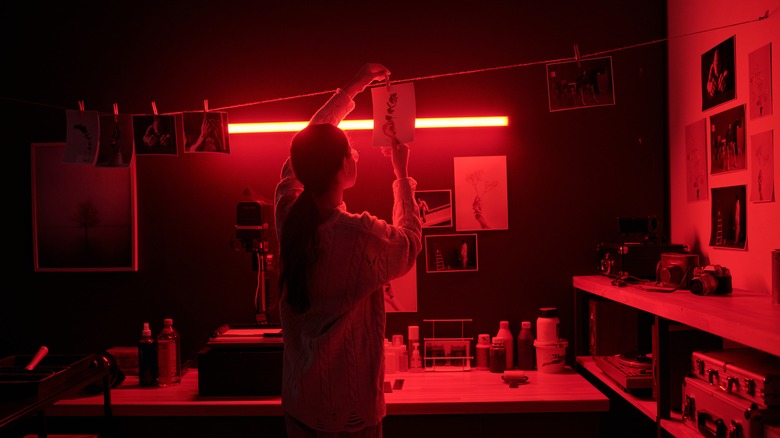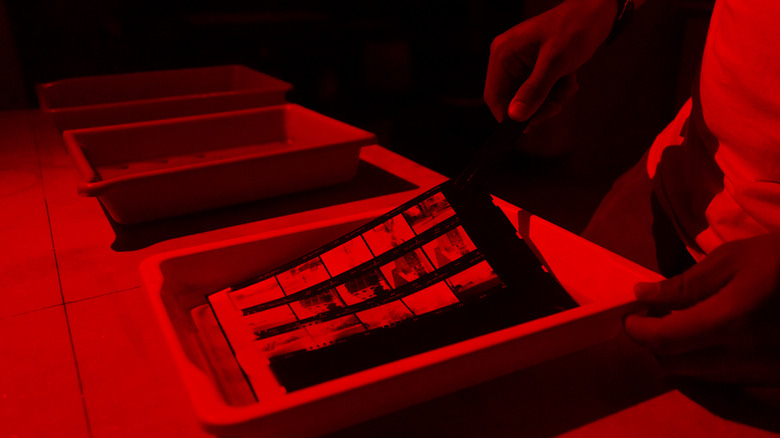This Unexpected Appliance May Be The Trick To Developing Photos At Home Like A Pro
We may receive a commission on purchases made from links.
Film photography has come back into style over the past few years, as retro tech trends continue to grow across the board. A film photograph's unmistakable warmth and colors are easy to spot across platforms like Instagram, with dedicated hashtags like #FilmPhotography amassing over 44 million posts. What the medium offers in style, though, it sometimes loses in convenience — all while racking up some steep costs.
Even though you might be able to save a few bucks by picking up an older, used SLR camera, analog photography unfortunately isn't a cheap hobby. Between high maintenance and repair costs, the rising price of film, and the need to pay to develop said film, your $40 yard sale treasure can quickly become a big investment. That said, you might be able to save a little money by developing your own photos at home with a little help from an appliance you might even have in your kitchen cabinet.
A sous vide machine, like the Anova Culinary Sous Vide Precision Cooker 2.0, can be an unexpected asset for your home photo studio. These appliances work by heating water to a specific temperature using a heating element. Creating a highly controlled environment is absolutely paramount when using photo developing chemicals, particularly if you're working with color film, and it's one of the more challenging aspects of setting up a darkroom at home. A sous vide machine, then, is particularly helpful for maintaining the temperature of those chemicals, as it makes sure that the water bath stays at the exact temperature you set it to throughout the entire development process.
How to use a sous vide to prepare photo chemicals
You're going to be using your sous vide in place of a standard temperature control system, like the TCS-1000 Immersion Circulator Thermostat. It's going to help keep your chemistry at a level temperature while you work on your negatives. As well as the sous vide, you're also going to need a large container to put some water in, like a plastic tub or metal bucket, and all of the other equipment you would usually need to develop photos: chemicals, dark bag, spool tank, and so on. Lastly, you'll need a space to work in — ideally, a kitchen, bathroom, or any workspace with access to clean water and no interruptions.
Fill your container with water and place it on a stable surface. Next, put the sous vide machine's element in the tub, and make sure it's plugged into the wall. You're going to use this to warm up your C-41 developer and blix, two chemicals used to develop color film photos, and to keep them at a stable temperature throughout the process. Put your chemistry bottles in the water, and set your sous vide to 102 degrees Fahrenheit.
Sous vide machines work using built-in thermometers, so you'll be able to read your chemical bottles' temperature straight off the appliance's interface. When the water reaches the desired temperature, your developer and blix are ready for the rest of your development process. If you're working with black-and-white film, then you can use a lower temperature, usually 68 degrees Fahrenheit.

